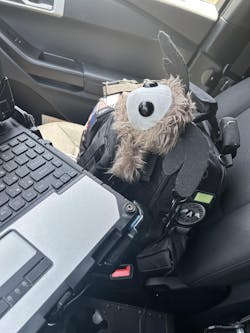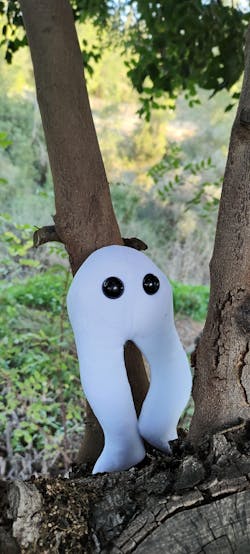This elusive creature needs no introduction: We all know the most famous cryptid in the United States: Bigfoot, or ‘Sasquatch’. A giant ape-like creature that some people believe roams North America. Bigfoot sightings have been recorded in almost every state in the United States, and parts of Canada, however, over the years, all the evidence that has been collected has not been enough to prove its existence.
Much has been said about it; some think the whole thing is a hoax while others say they've had close experiences with the creature. In the Northwest, where the creature is connected to Native American myths and stories, bigfoot sightings are most common.
SOME QUICK BACKGROUND
The stories of Bigfoot have been told all throughout the world and predate written history. There are rumors about seven-foot-tall, hairy men haunting the forests in North America, mainly in the Northwest, occasionally frightening campers, lumberjacks, hikers, and other outdoor enthusiasts. The name Sasquatch, which means "wild guy" or "hairy man", comes from the Halq'emeylem term ‘Sasq'ets’.
RECOMMENDATIONS
We totally believe that Bigfoot is out there, hiding somewhere in the woods. What should be the first step?
AWARE OF HUMAN HOAXES
Since the birth of the legend, the general public has been fascinated by the premise that a race of great apes secretly inhabits the forests of the United States. Over the years, some bad-intentioned individuals have falsified evidence (such as handprints and footprints) for media sensationalism and perhaps financial profit. What can we do to identify a human fake?
THE AREA TO EXPLORE
The place where you want to carry out your search will be decisive. Using information from the Bigfoot Field Researchers Organization (BFRO), after analyzing the 23,000 sightings across the country, we had determined the eight states with the highest likelihood of having your own Bigfoot encounter:
- WASHINGTON - 2,032 Sightings
- CALIFORNIA - 1,697 Sightings
- PENNSYLVANIA - 1,340 Sightings
- MICHIGAN - 1,131 Sightings
- NEW YORK - 1,068 Sightings
- OHIO - 1,042 Sighting
- OREGON - 1,009 Sightings
- TEXAS - 806 Sightings
There has been an uptick in cryptid sightings lately, and I've been keeping an eye on the maps. Here are three that I've found particularly interesting:
When it comes to tracking an animal, especially one so elusive, you're more likely to find false evidence in the sites that are most visited by Bigfoot hunters. There is less chance of finding counterfeit prints, for example, in a wooded area rarely visited by other people, although this can be dangerous. Before entering any remote area away from society, remember to have all the location equipment, first aids and defense and supplies. You never know what might happen when you track down the North American champion of hide and seek.
Bigfoot prints are massive and hefty, as one might expect from a creature that stands at around 8 feet tall and barefoot. Human hoaxers have an easy target in foot prints! You're off to a good start if you pay attention to the foot's flex and the way the weight is distributed. Flat and devoid of features? Undoubtedly not the actual thing. Instead of flowing across the foot like ours do, do the prints have longitudinal ridges? You're all set.
THE NIGHT BEFORE OUR TRACKING TRIP
Please, let your parents, partner or friends know that you are going on your expedition, if you’re pretending to do this all alone. Sometimes plans can turn out very differently than we expect them to, and in the forest, anything could happen. Even having maps or GPS, nothing guarantees that we are totally safe out there: Even spraining an ankle in the middle of the forest can be deadly. Remember to always have your phone charged; you do not have to use it except for necessary cases; either way, you're in the woods.
Have emergency contacts that you can call or send a message to, but let them know they are your emergency contacts so you can be sure that they will answer; all this in case you get lost or hurt. The day before, eat very well, as much as you can; even, that morning before leaving, have a big breakfast full of carbohydrates and proteins (you might need them). The night before our expedition, go to bed early; a good night's rest will be essential for the energy and concentration we need.
Click the picture to have a look:)

NECESSARY THINGS YOU MUST TAKE WITH YOU
-
Local wildlife guide: Not everything you'll hear out there will be Bigfoot. It is important to know how to recognize the sounds of the animals that live in the forests that we are going to visit. If we are tracking a creature, the noise of another animal could confuse us of our real objective, and more if the animal is a kind of giant human ape that could potentially hurt us. We must not let nervousness and anticipation fool us. Something that can be very useful would even be to download a list of the sounds of registered animals that live in the area where you will be. That sound that we hear in the distance is a coyote or is it something else? Well, you have to know how to identify it.
-
First aid kit: Safety is never a game. Meeting our “little” friend could be terrifying, but perhaps it could not be the worst thing that could happen to us: Cuts, poisonous bites or a sprained ankle can be fatal if you are deep in the forest, that is why we should ALWAYS have with us:
- Bandages,
- Alcohol (TO CLEAN WOUNDS, OK?),
- Medical adhesive,
- Needle and thread,
- Scissors
- Insect repellent (You're welcome for reminding you),
- Flashlight and flare (For extreme cases where against your will, it's night and you're still out there),
- Night vision goggles (if you have).
Among the medications that we recommend taking on our expedition are:
- Pain relievers,
- Anti-inflammatories,
- Antidiarrheals,
- Antiemetics for vomiting and nausea,
- Antihistamine for allergies.
Do you think we exaggerated? All the previously mentioned things take up very little space in a backpack, so don't worry; You won't carry any extra weight. The important thing is to have a fun and safe expedition at all costs, regardless of the outcome.
Video Camera: Let's just say, you found Bigfoot. You see it a few meters from you and you have a perfect angle to take a photo or a video… The problem is that you didn't have a camera with you. Surely this is something that should not happen. Currently, for any expedition it is mandatory to leave a visual record of it; whether the result is good (or not).
THINGS YOU SHOULD ALREADY KNOW
-
Prepare to go deep into the woods: Don't expect to find Bigfoot near the paths traveled by people, the deeper into the woods you are, the better. Do you see why we put so much emphasis on safety? If you think it will only be an activity for a few hours, you should think again... It is very likely that it will get dark and you will still be out there.
-
Train your physical stamina before your expedition: You won't be able to carry out a good mission if you don't have a little physical stamina. Anyone can look for Bigfoot, but if you're not fit to walk long distances on uneven terrain, in the heat and humidity, you won't feel very well physically. Although it should be understood, we remember to carry water and at least energy bars at all times.
LISTEN CAREFULLY
If you've been walking in the woods for hours, focused on bumping into Bigfoot, there are chances that any animal noise will make you think the Sasquatch is behind you. Do you remember the local fauna guide that we suggested and knowing the sounds of the animals in that area before? This is where they are useful to us.
Most of the audios that are presented as evidence of the existence of Bigfoot, show a sound similar to a deep and torn howl; maybe like the sound Chewbacca (from Star Wars) makes, combined with the start of a chainsaw. Listening to these audios, in fact, it does sound like the vocalization of a great ape.
Bigfoots have been reported to communicate with each other over great distances by knocking on the bark of trees. Of course, it is not something similar to the morse code invented by humans. Some researchers knock on trees with their knuckles (you can also use a tool, don't worry) to attract Bigfoot.
HOW TO IDENTIFY AN AREA WHERE BIGFOOT POSSIBLY LIVE
Bigfoot is a large mammal, and like all animal species, it needs lots of food and water to survive. The areas most likely to be the habitat of Bigfoot are: Glades, near lakes and lagoons in deep valleys. Did you find a very hidden cave near a lake, where there are large supplies of food and water? Good! It could be a Bigfoot hideout, but please: Don't go into any caves deep in the woods and especially when you're alone, you literally don't know what might be inside.
Caves and nests that are supposed to resemble gorilla nests and are made of sticks and branches from local plants are potential Bigfoot overnight locations. Let's imagine you stumble onto a nest or a cave in a remote region of the forest where there is plenty of food and water. Also, you can locate animal hair close to one of these nests or tunnels. Again, here is where your guidebook comes in handy. Is that hair from a deer, a bear or Bigfoot's?
OTHER FEATURES
Bigfoot has a really distinctive walk. They maintain a more rounded posture than humans and lean forward. They walk in a manner akin to humans, swinging their arms, but instead lifting their heels higher as they do so. That object that you can make out through the trees? Check to be sure it isn't just another Bigfoot hunter. Bigfoot can't smell wonderful; it's too wild and furry. It is said to have a rotting meat and foul-smelling swampy dirt odor. Pay heed if you sense a powerful essence around you.
YOU FOUND BIGFOOT! WHAT TO DO KNOW?
Remember the golden rule while approaching him: You are in Bigfoot's neighborhood, and even Bigfoot has boundaries and wants personal space. Bigfoot appears to be an introvert, so being surrounded by a lot of people is definitely not the best way for him to be relaxed.
Avoid using the flash of the camera at any costs. Silent video recording is preferred. You should avert Bigfoot's attention by lowering the camera or put it away if you struggle with anxiety. Keep your composure first. Because we don't know how a wild animal like Bigfoot would respond, we must maintain our distance and not think of him as our best friend. We don't know if it was just our bad luck that we bumped into Bigfoot one day when he was in a terrible mood, even though most encounters with him haven't been violent.
OTHER WAYS TO DETERMINE IF BIGFOOT IS IN THE AREA
Some Bigfoot seekers leave interesting objects, such as kitchen utensils, in the woods where they're sure no other humans will find them and return to see if they've been moved or taken. Bigfoots are postulated to be highly curious, as would any great ape. Perhaps leaving some of these objects, with a hidden surveillance camera, can be a good way to obtain evidence of the existence of Bigfoot.
ACT NATURAL
Bigfoot has been said to like to watch campers and hikers as they go about their usual activities. Walk as if you were just taking a walk; stop suddenly and change direction quickly, are things that can make Bigfoot confused, emitting sounds and growling from the bushes.
LAST CONCLUSIONS
An old saying assures that: Preparation is the best friend of good luck. Consider everything we have told you in this guide and we assure you that you will be successful on your next expedition to find Bigfoot. Let's do a little summary:
-
Start preparing before the trip: Days (or better, weeks) before, start preparing yourself physically for all the effort your body will make on the expedition.
-
The night before: Let your friends and family know where you are going and the possible areas you are going to explore. Remember to eat very well the night before and the morning of the trip. Don't forget to fully charge your phone's battery and download maps of the areas you will explore.
-
When exploring: Remember to take with you a first aid kit with the medications mentioned above, energy bars and drinking water. Tools like knives, compasses, and flares are also helpful. For nothing, forget the flashlights and binoculars.
Didn't find anything? Don't be discouraged, we are talking about a master of hide and seek. Seeing Bigfoot voluntarily has never been easy, but it's not impossible either. Above all, remember to enjoy the whole process of exploring nature, regardless of the outcome. Now that you know all these techniques, we invite you to go out and search, responsibly, for Bigfoot!
 Sold out
Sold out Sold out
Sold out Sold out
Sold out




























